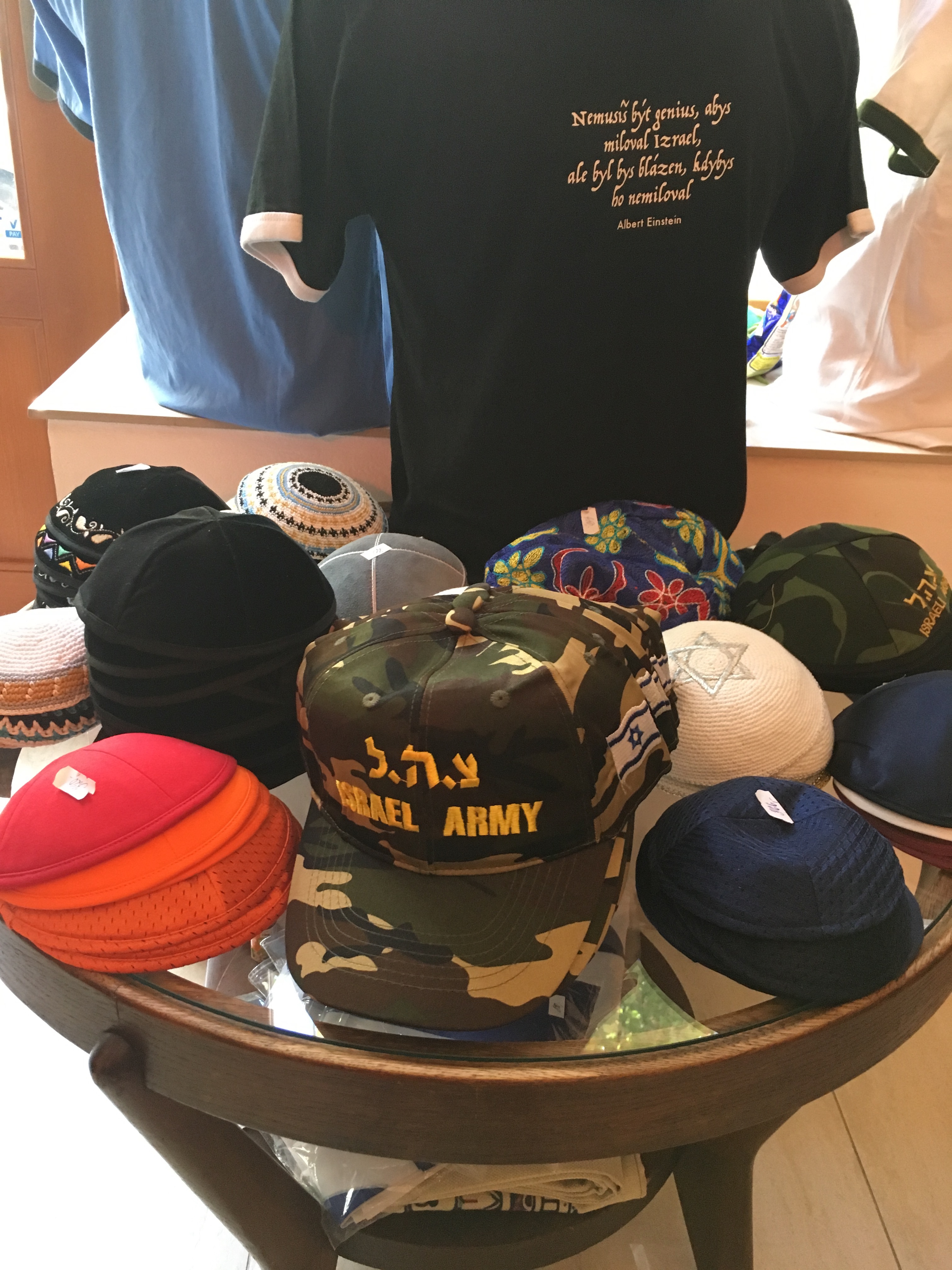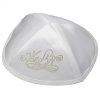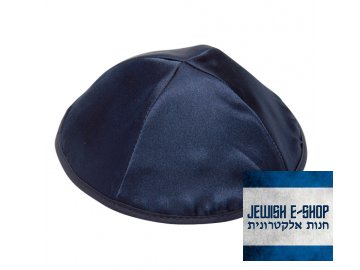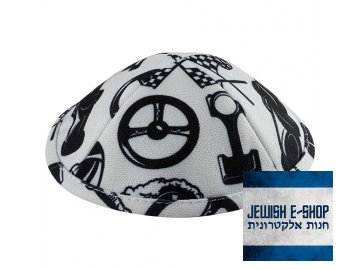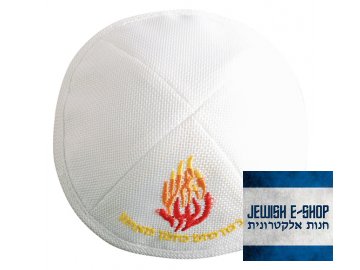Kippah (כיפה)
-
 Caps
Caps
-
 Kippah - Crocheted
Kippah - Crocheted
-
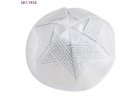 Kippah - Satin
Kippah - Satin
-
 Kippah - Cloth
Kippah - Cloth
-
 Kippas - Comics
Kippas - Comics
-
 Tichel - headscarf - head covering
Tichel - headscarf - head covering
Bestsellers

The perfect yarmulke for every basketball, baseball or American football lover!

An immortal subtle combination of white and silver in a new design - a kippa with a distinctive silver six-pointed star and silver stripes around the perimeter, 17 cm wide.
Kippah (כיפה) [pl. kippot] and yarmulke (יארמלקע) are the names for a traditional Jewish head covering which is based on Jewish traditions and religion. Wearing of this head covering is considered to be a sign of devoutness. Religious women may cover their head as well, though they usually wear a scarf for this purpose (in some Liberal and Progressive Jewish communities they however wear a kippah during a prayer too).
According to the Talmud wearing a kippah reminds us of G-d as a Higher Authority above us. Etymology of the Yiddish word yarmulke comes from Aramaic, yira malkah, which literally means 'awe of the King.' According to traditions one wears a kippah in order not to stand naked in front of G-d. History of wearing a kippah dates back to the destruction of the Second Temple and according to some sources it resembles head covering of the High Priest. Wearing a kippah became common during the Middle Ages. Head covering is mentioned in Talmudic tractates Shabbat and Kiddushin and in Shulchan Aruch according which religious man 'should not walk more than four cubits bareheaded.'
Wearing a kippah varies in dependence on Jewish denominations. While Orthodox Jews always wear a kippah, wearing a kippah by Reform or Liberal Jews is a matter of choice. One should wear a kippah when praying, attending a Jewish cemetery, a synagogue or at a religious festivals or events. The Talmud requires wearing a kippah not only during a prayer but also during Torah study. Wearing a kippah is also a kind of statement and is considered as an outward sign of Judaism.
There are different types of kippot regarding their material and colour. At least since the eighteenth century, satin, velvet and cloth have been used as a material for kippot. Among the popular types are crocheted or knitted kippot (kippah sruga). Your kippah can be plained, multicoloured, patterned or may include funny motifs. In Israel, wearing a kippah also reflects social affiliation. Yemeni and Georgian Jewish communities change making kippot into a kind of art.
